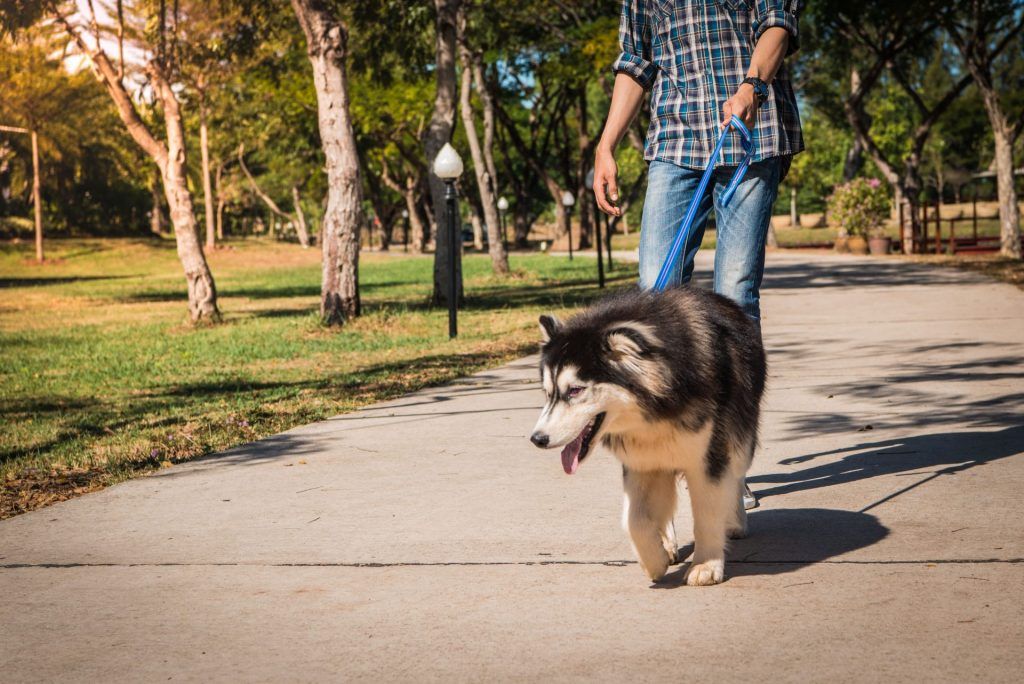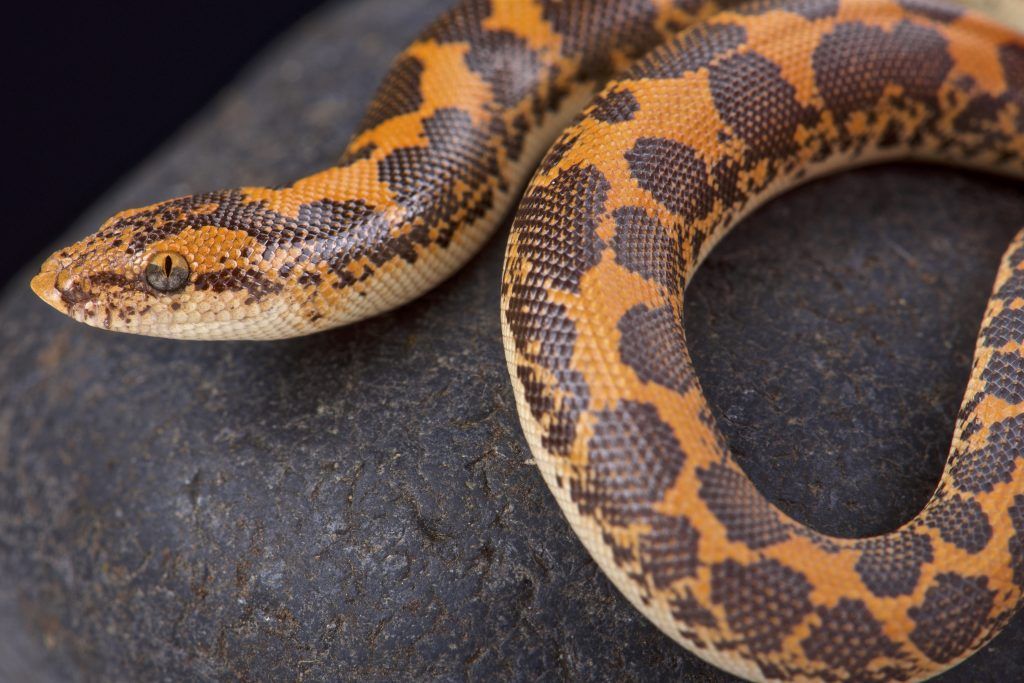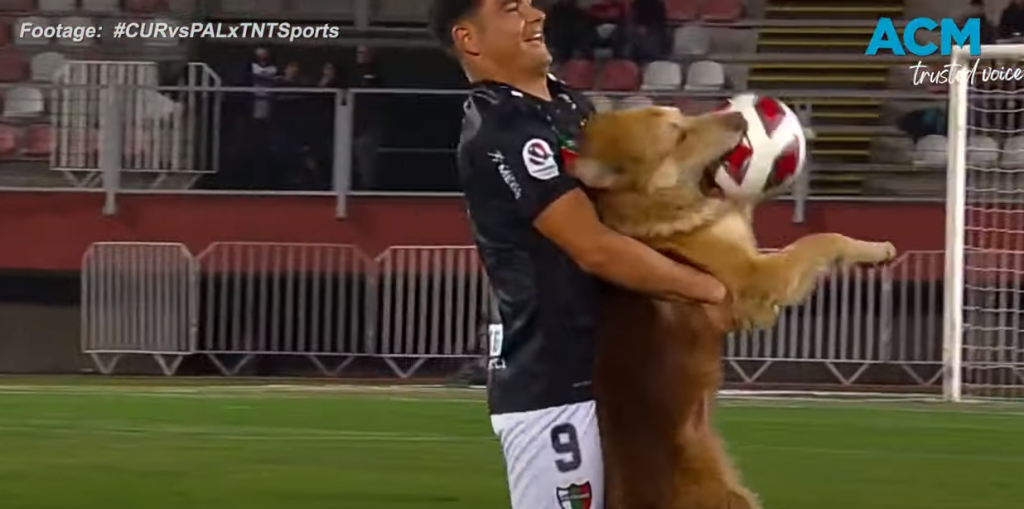Cane Corsos have been popular for decades because of their loyal, protective, and confident demeanor. But one of their most striking and memorable features is their coat. The Cane Corso coat comes in a variety of colors but only a few patterns.
How many different colors do Cane Corsos come in?
Well, I’m glad you asked, and why I wrote this. There are a number of coat colors recognized by the major kennel clubs and a handful that aren’t. The non-recognized coat colors are the most rare when it comes to Cane Corsos, just like most other dog breeds.
Read on to see pictures of each coat color and where they stack up in the rarity rank.
The Many Cane Corso Coat Colors
The table below ranks each coat color from common to the rarest Cane Corso color of all, as well as whether the color is recognized by the American Kennel Club (AKC) or the Fédération Cynologique Internationale (FCI).
| Cane Corso Coat Color | AKC Recognized | FCI Recognized |
|---|---|---|
| Black | Yes | Yes |
| Fawn | Yes | Yes |
| Gray | Yes | Yes |
| Red | Yes | Yes |
| Black Brindle | Yes | No |
| Gray Brindle | Yes | Yes |
| Chestnut Brindle | Yes | Yes |
| Blue | No | No |
| Blue Fawn / Formentino | No | No |
| Chocolate/Liver | No | No |
| Isabella | No | No |
| Straw | No | No |
Breed Standard Coat Colors
According to the AKC’s Cane Corso breed standard, the only acceptable colors are black, gray, fawn, and red. The brindle pattern is acceptable on any of these colors.
The color of the coat must be solid, or in the case of brindle dogs it has to show clear stripes of a different shade from the background color. The only white allowed is small patches on the chest, throat, chin, backs of the pasterns (lowest part of the leg), and toes.
Black Cane Corso
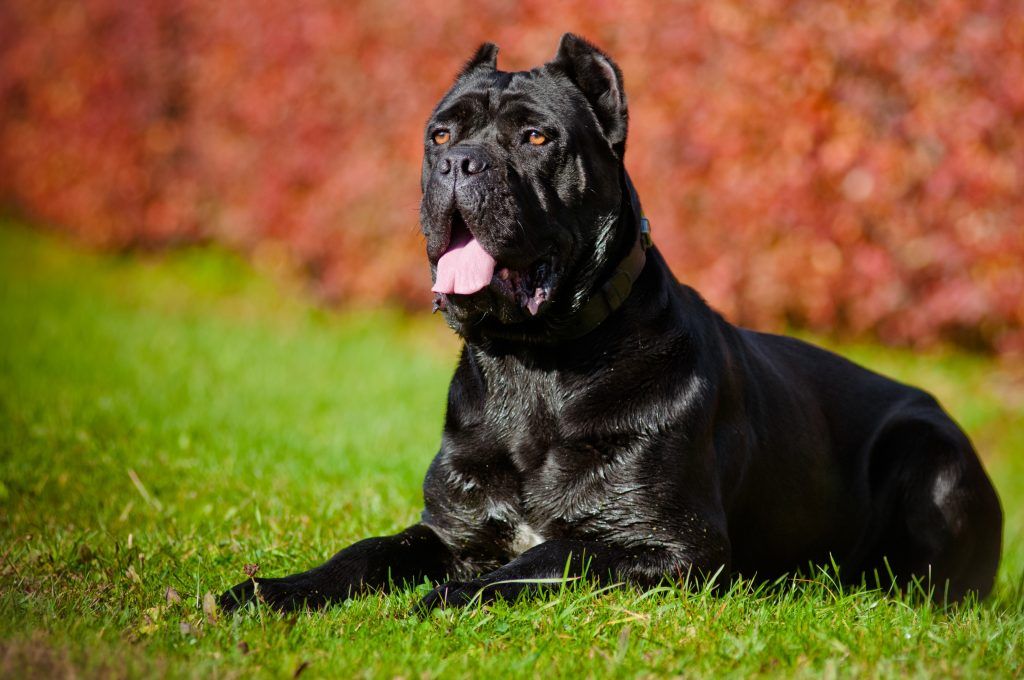
Photo Credit: Shutterstock
Black is the most common and most popular coat color for Cane Corsos. It mixes exceptionally well with the dog’s powerful stature and natural shine. Many people prize the black Cane Corso for its intimidating appearance, but they are no more aggressive than any other coat color.
If you are one of the people who has or wants a black Corso, I’d recommend a glow-in-the-dark collar or maybe a small light attached to them if they go out at night. Compared to other black-coated breeds, black Corsos blend with the night and can be very hard to see.
Gray Cane Corso
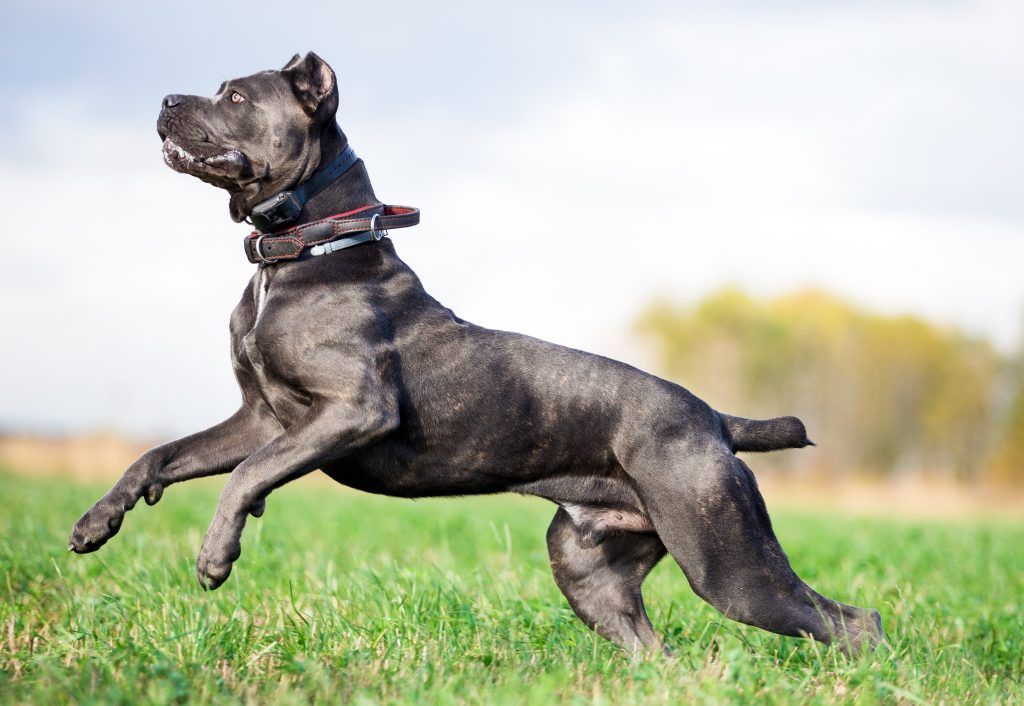
Photo Credit: Shutterstock
Gray is typically a rare color for dogs, so the fact that Cane Corsos can have a gray coat has excited enthusiasts of this breed for years. The shade of gray can range from light silver to dark charcoal, depending on the individual dog’s genetics.
The gray coat occurs because of a recessive gene that dilutes the normal black color. Usually, animals with recessive genetics are rare, but in this case, because of how popular the coat color is, breeders have specifically bred for the gray-coated Cane Corsos.
Breeding for a specific shade of gray remains next to impossible. One of the reasons is that Corsos, with a gray coat, can change over time. The shade can get darker or lighter as the pup ages, so the color they have at birth will not necessarily be the same at 1 year old.
True gray remains as insanely beautiful as it is elusive.
Fawn Cane Corso
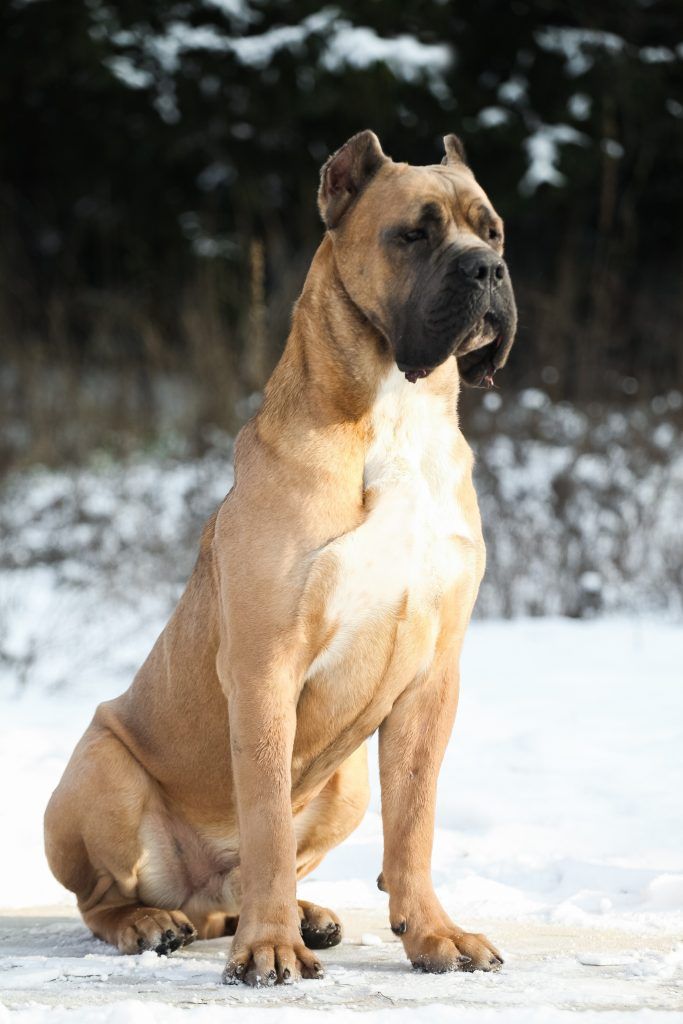
Photo Credit: Shutterstock
The next color on the list is Fawn, a light cream to dark tan color. According to my research, it is slightly less common than gray, but my personal experience shows the opposite. I have seen more fawn Cane Corsos than any other color, including black. But research is research, so I’ll roll with it.
The fawn color is similar to the color of a deer and can blend in with natural vegetation. Leading to the widespread belief that Corsos with a fawn coat were most popular as hunting companions centuries ago.
According to the breed standard, fawn-coated Cane Corsos have to have a black or gray mask (color on their muzzle) that doesn’t extend past the eyes. In my opinion, this is why fawn is one of the most striking colors they can have.
Black Brindle Cane Corso
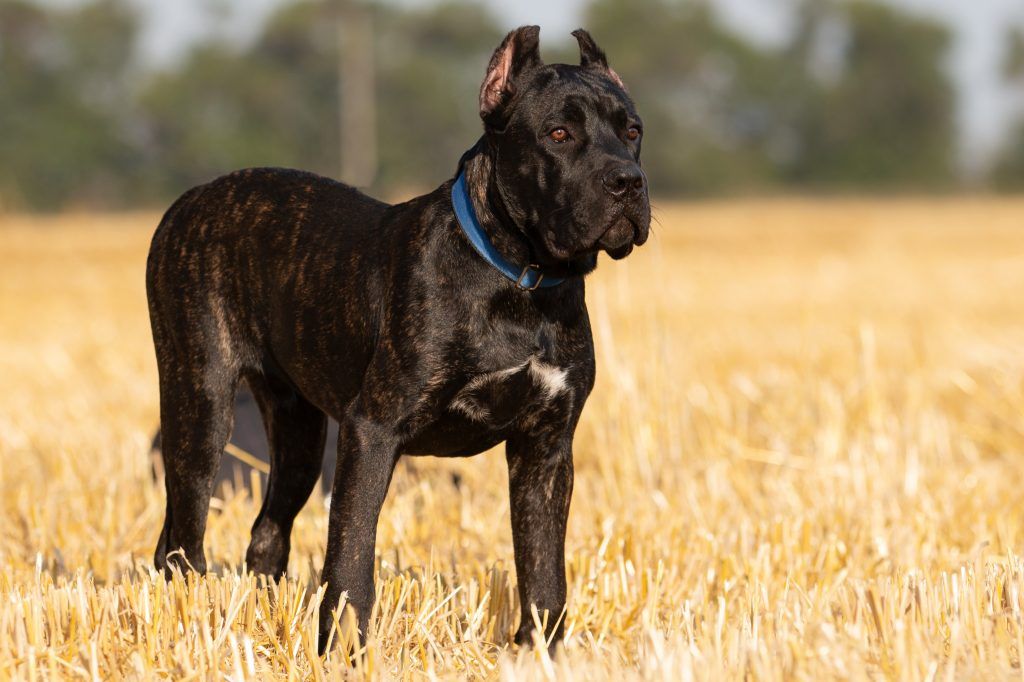
Photo Credit: Shutterstock
Brindle patterns on dogs are highly popular, and the Cane Corso is no different. Black Brindle Corsos have a brownish-red base with black tiger stripes on top, giving them an amazing and unique look. In Italy, where the breed is from, they have their own name for this tiger-striped coat, “Tigrato.” A fitting name for these fantastic dogs.
Brindle has been a naturally occurring coat color in Cane Corsos for decades, not the result of a genetic aberration. As such, it is recognized by the AKC and FCI as a normal coat color.
Interestingly, the black brindle isn’t just an awesome-looking color, it can also help the dog live longer. A study published in 2017 found that black brindle Cane Corsos had an average lifespan of 10.3 years. Almost a full year and a half longer than its fawn, black, or gray-colored counterparts.
Gray Brindle Cane Corso
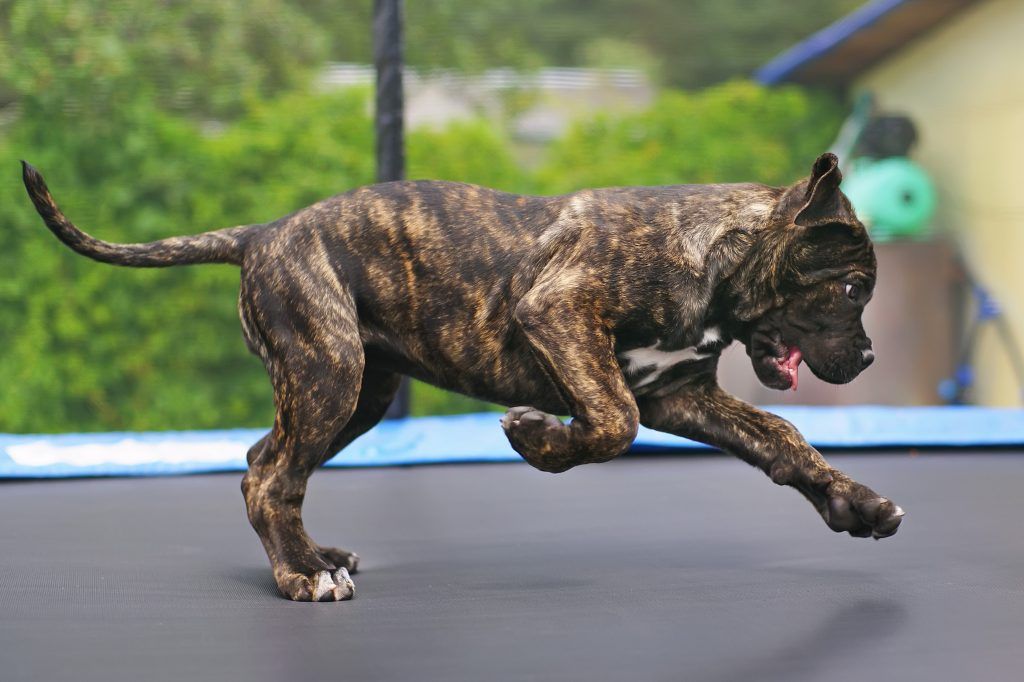
Photo Credit: Shutterstock
Both the black and gray brindle Cane Corsos have a red or brown base color, but what sets these two apart is the color of the stripes. Gray brindles have gray or blueish colored stripes, giving them a lighter, almost paler look compared to the other brindle colors.
They are considerably rarer than the standard gray or black brindle colors, even though they are easy to breed. The rarity lies in the way the genetics pass down. When breeding gray brindle to gray brindle, you will only see the gray brindle color in 50.9% of the litter. While this is lower than what you’d expect to see, these are still phenomenal odds, but it does mean less are produced than other colors can be.
Like other brindle Corsos, the gray brindle also gets a longer average lifespan thanks to its genetics.
Red Cane Corso
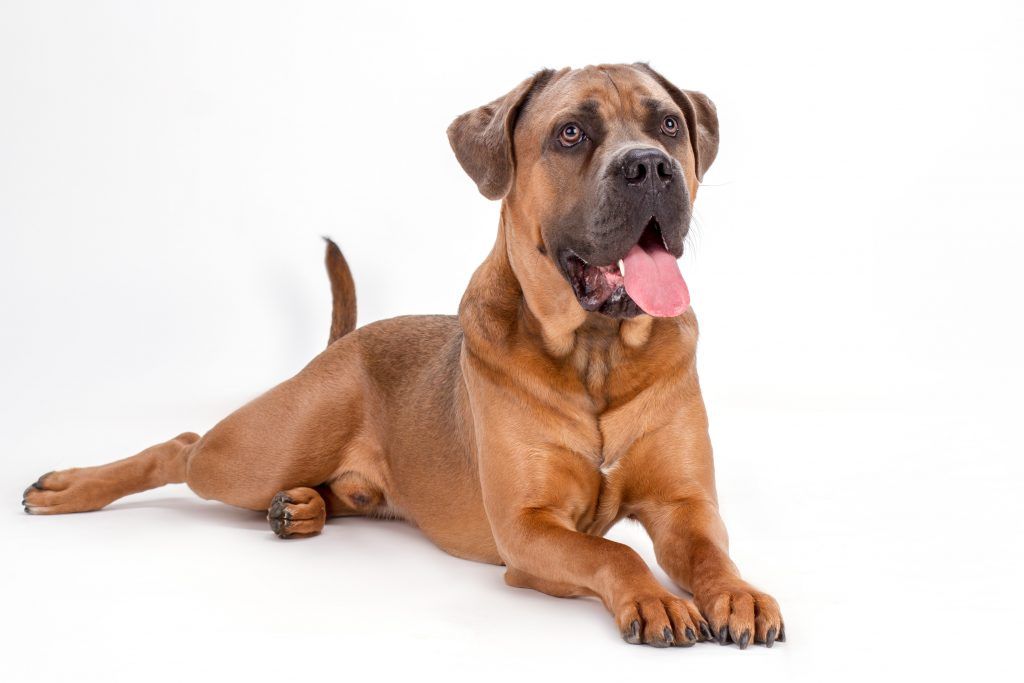
Photo Credit: Shutterstock
Red Cane Corsos are a stunning example of the breed. Their reddish hue can vary from a light champagne color to a deep red mahogany or chestnut hue. All red shades are accepted by the AKC breed standard as long as the dog has a black or grey mask that doesn’t go past the eyes.
Many red Corsos are born with blue or black saddle marks that disappear as the puppy ages.
Chestnut Brindle Cane Corso
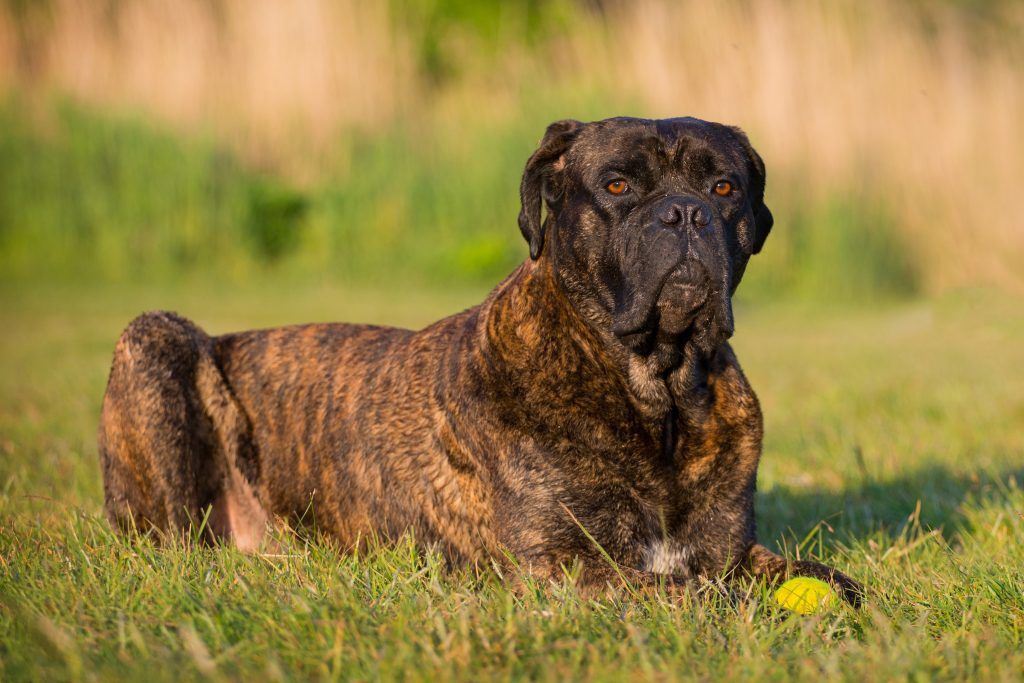
Photo Credit: Shutterstock
The least common of all the standard Cane Corso colors is the chestnut brindle. Breeding specifically for chestnut brindle is difficult because one gene, at least, is located on a sex chromosome. This is nearly impossible to control, which is why it’s the rarest of the brindle colors.
Like the other brindle coats, there exists an acceptable range of color shade variation. In some cases, the chestnut brindle is almost indistinguishable from the black brindle. The key is lighting. In natural light, it’s easier to see that the chestnut brindle has reddish-brown stripes on a red or brown base. In dim light, the stripes can look black and closely resemble the black brindle.
Non-standard Coat Colors
Not all Cane Corso colors are accepted or recognized by the major kennel clubs. Usually, these types of colors are highly controversial because one group believes breed standards should not be deviated from. On the other hand, the other group either likes an unusual color or can appreciate a dog’s beauty regardless of what the standard says.
Regardless of what camp you’re in, these colors are certainly interesting, to say the least.
Straw Cane Corso
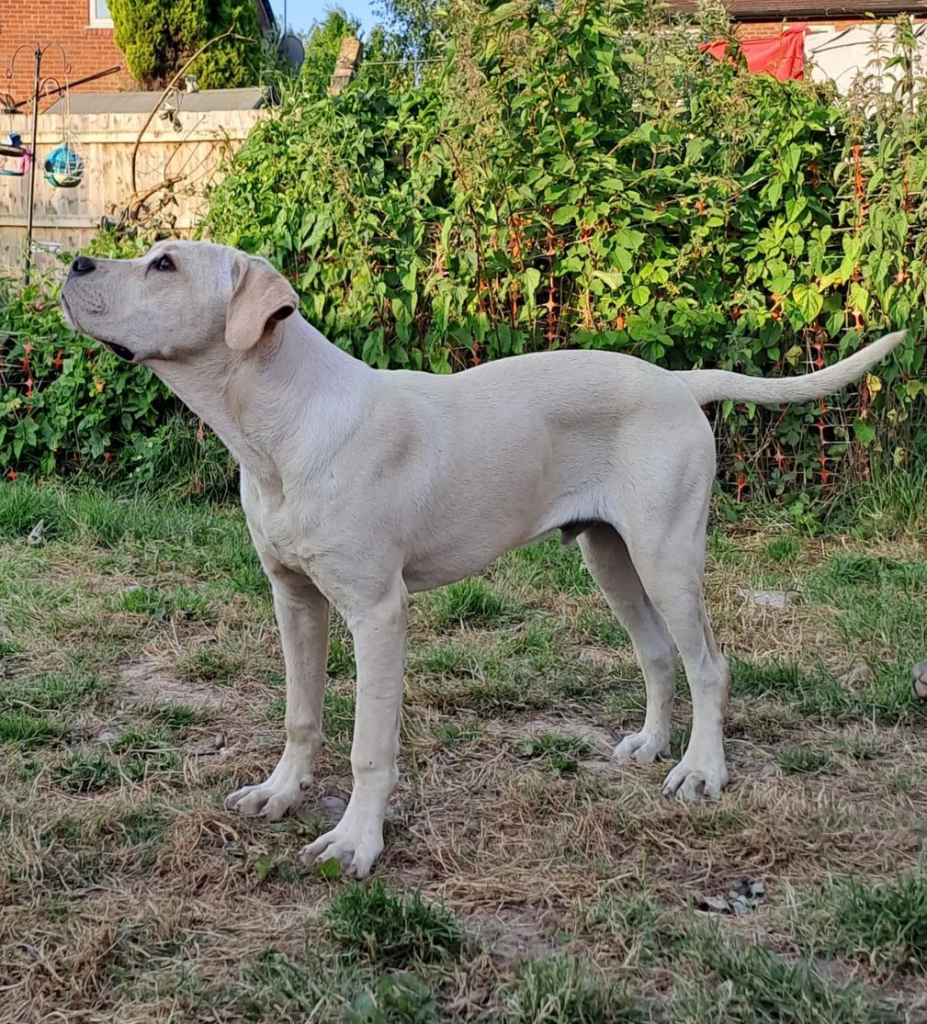
Photo Credit: @corsosxuk(ig)
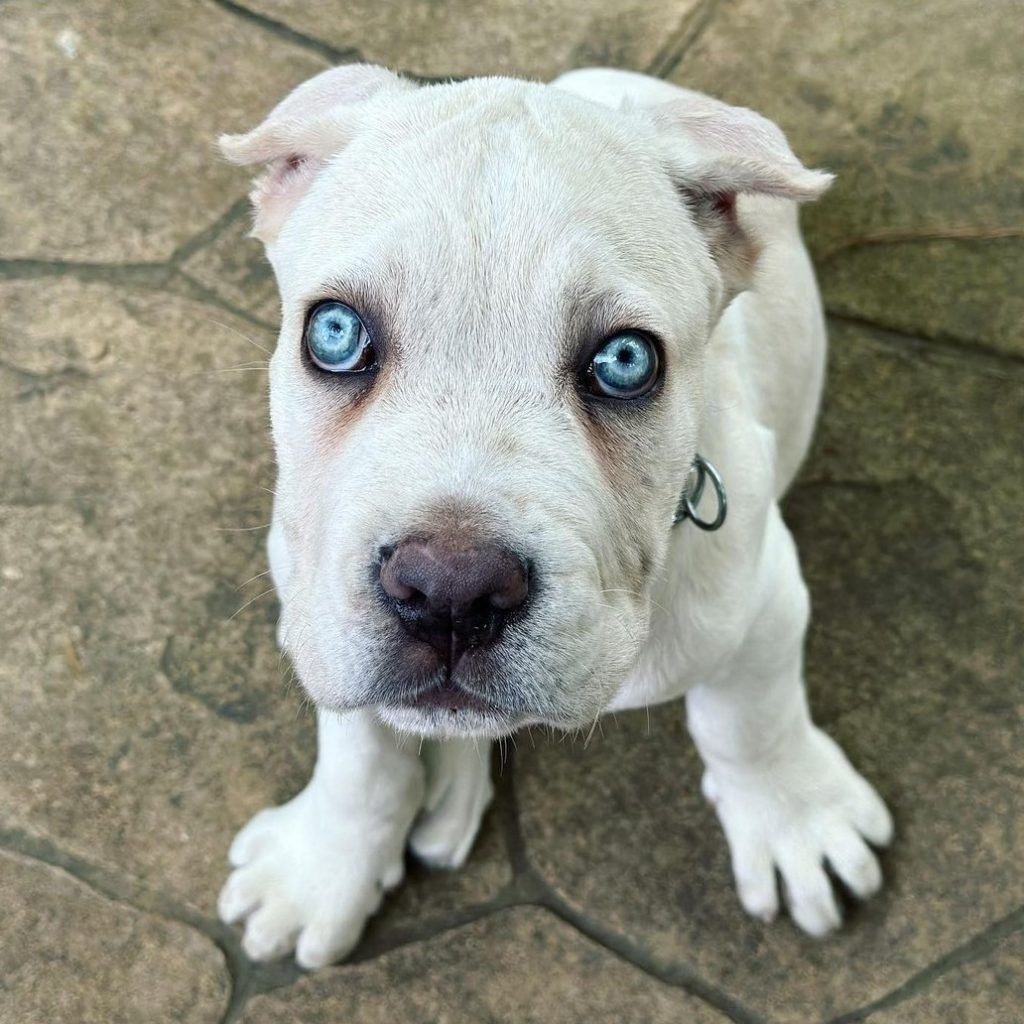
Photo Credit: @walterwaynewhite(ig)
Starting with perhaps the most controversial color of all, the straw Cane Corso. A coat color that dates back a hundred years, probably more. So why is it not a standard color?
Straw Corsos are white or cream-colored with a pale pink nose and no mask. This is important for 2 reasons. The first is that for many years, people thought straw Corsos were actually albinos, which would be a genetic default if true. The second reason is lighter dogs are required to have a mask to fit breed standards, which straw Corsos don’t have.
So, while the straw color isn’t a disqualifying color by itself, the lack of a mask is. Even though straw Corsos date back much further than the original breed standard, it has never been changed to allow them.
Presumably due to the belief surrounding its origin. Experts claim that the straw color comes from breeding with Abruzzese Sheepdogs in the 1800’s. Since genetic tests weren’t around back then, and it has been too long now, there is no way of proving this one way or another. In any case, it’s a sound theory, especially when you consider how they are produced.
Straw Cane Corsos are impossible to breed for. They can randomly show up in any litter, making them the rarest color of all. It also indicates that all Corsos carry the genetics necessary for producing a straw-colored puppy, lending further belief to the origin theory.
Blue Cane Corso
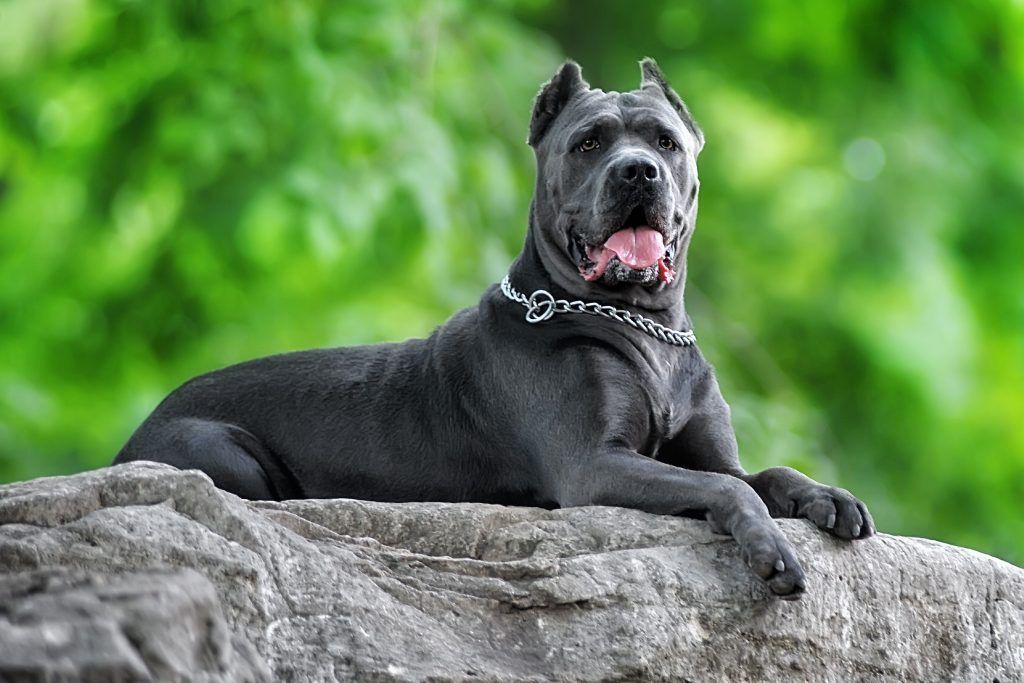
Photo Credit: Shutterstock
Some argue that there is no such thing as a blue Cane Corso; really, it’s a silvery gray shade of the standard gray color. Others claim that blue is a separate color of its own, and there are always breeders advertising blue pups for sale.
Blue is not mentioned by the AKC or FCI as a color, either accepted or disqualifying. Instead, they identify diluted black as ‘gray’ instead of the term ‘blue’ as is seen in other breeds standards. So, for the purposes of Cane Corsos, blue and gray are the same thing.
The dilution of black to create the steely gray, or silvery gray, blue color is caused by recessive mutations in the melanophilin gene (MLPH). Mutations in the MLPH gene often cause something called color dilution alopecia (CDA), which causes hair loss and skin inflammation.
CDA is not unique to Cane Corsos, it can occur in any dog with a mutated MLPH gene.
Blue Fawn Cane Corso
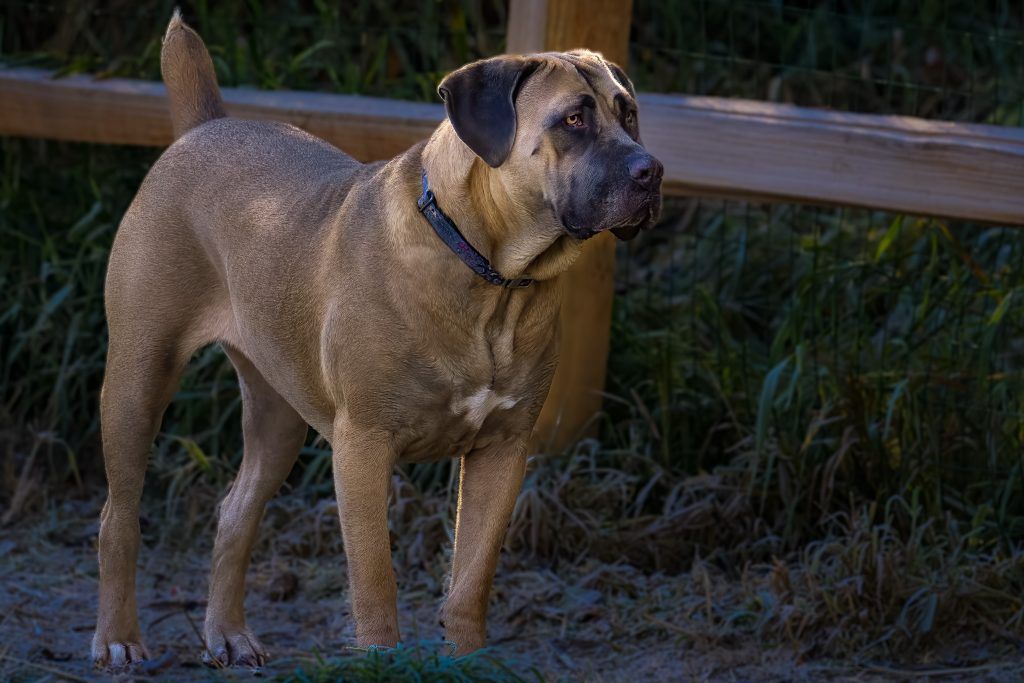
Photo Credit: Shutterstock
Blue fawn Cane Corsos are incredibly unique, almost looking like their own breed. They are the result of a diluted fawn color that causes a light carbon-colored coat with a blue (silvery gray) mask.
Blue fawns are sometimes referred to as a ‘Formentino‘ Cane Corso. Formentino is an Italian word used to describe the color of fermented wheat.
Since this coat color is the result of the same type of MLPH gene mutation, these dogs also have a higher risk of CDA.
Isabella Cane Corso
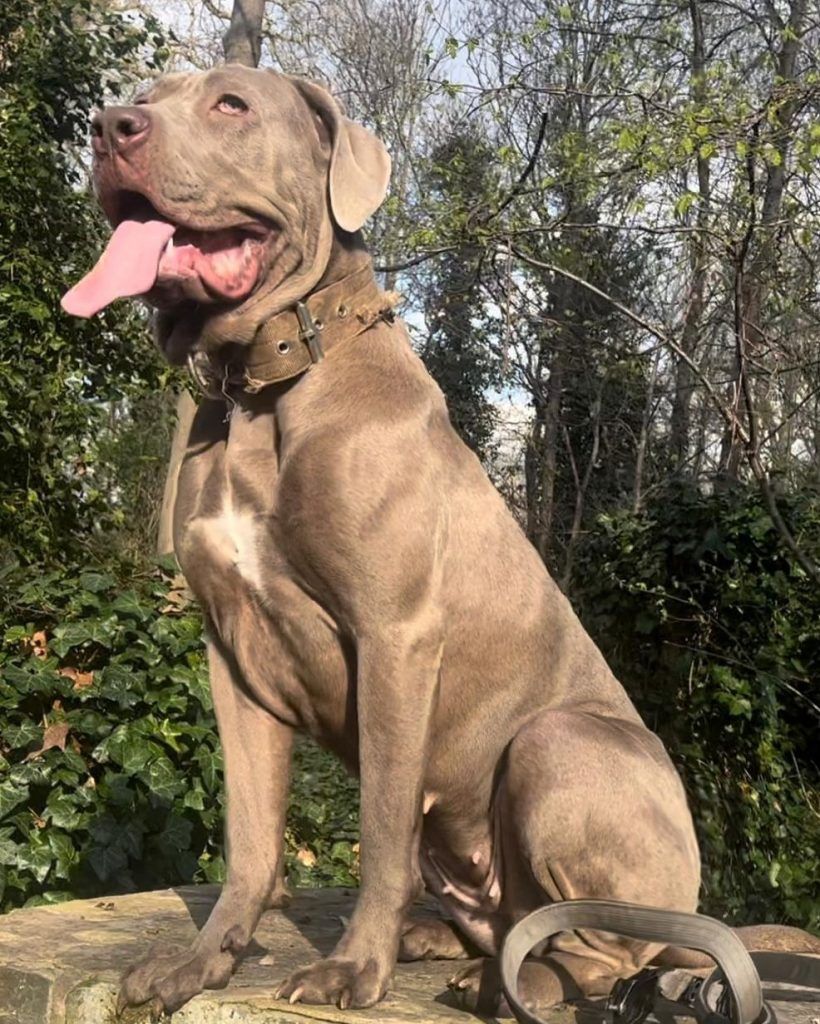
Photo Credit: @dapperddogs_(ig)
The Isabella Cane Corso is sometimes described as lilac or sandy in color. It is again the result of a color dilution, but this time a diluted red color. They either have no mask or a very faint one.
Apart from the lilac color, Isabella Corsos are further set apart by their pink-tinted lips, eyelids, and nose. The Isabella also usually sports green or blue eyes instead of the standard dark brown-amber color.
This unusual color is highly sought after in many breeds, but it remains a serious fault in Cane Corsos.
Chocolate / Liver Cane Corso
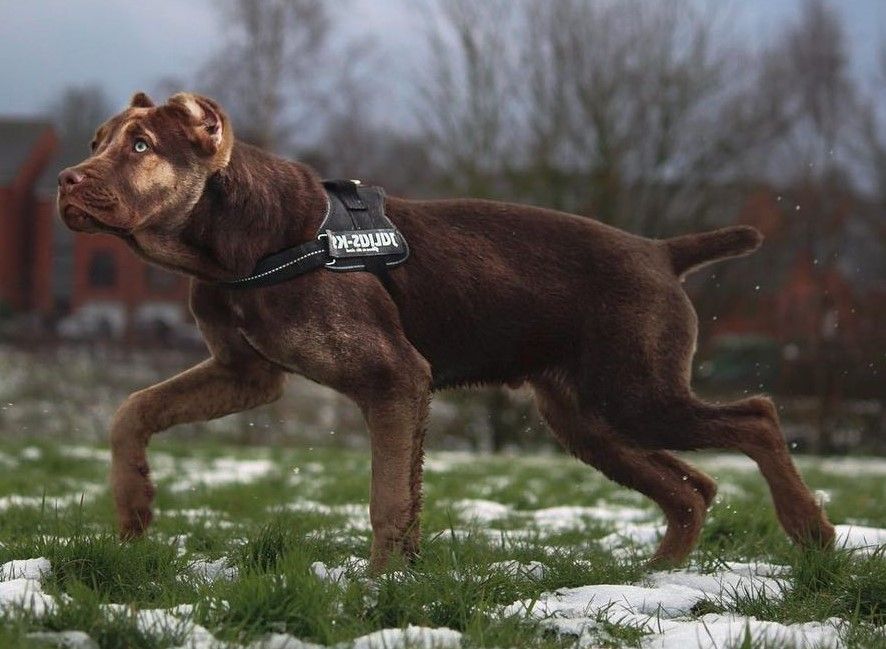
Photo Credit: @e.p_kennelz(ig)
The chocolate or liver Cane Corso resembles a dark red coat but with 2 key differences. The lack of pigment around the nose and eyes and green or blue-colored eyes are dead giveaways that this isn’t the normal red Corso.
This rare color is considered a serious fault by kennel organizations and has poor overall health due to unethical breeding practices aimed at creating the chocolate color.
Patterns and Masks
In addition to the coat colors, the mask of a Cane Corso is an important part of their overall look. I’ve mentioned masks a few times already, but here’s a quick overview.
Black Mask
The black mask is one of the most common and desirable markings for the Cane Corso. The black mask covers most of the face with black pigment, creating a sharp contrast with the rest of the coat. The black mask can be seen on any coat color except black and chocolate or liver.
Gray Mask
The gray mask is another common and attractive marking for the Cane Corso. The gray mask covers most of the face with gray pigment, creating a subtle contrast with the rest of the coat. The gray mask can be seen on any coat color except gray and isabella.
Disqualifying Patterns
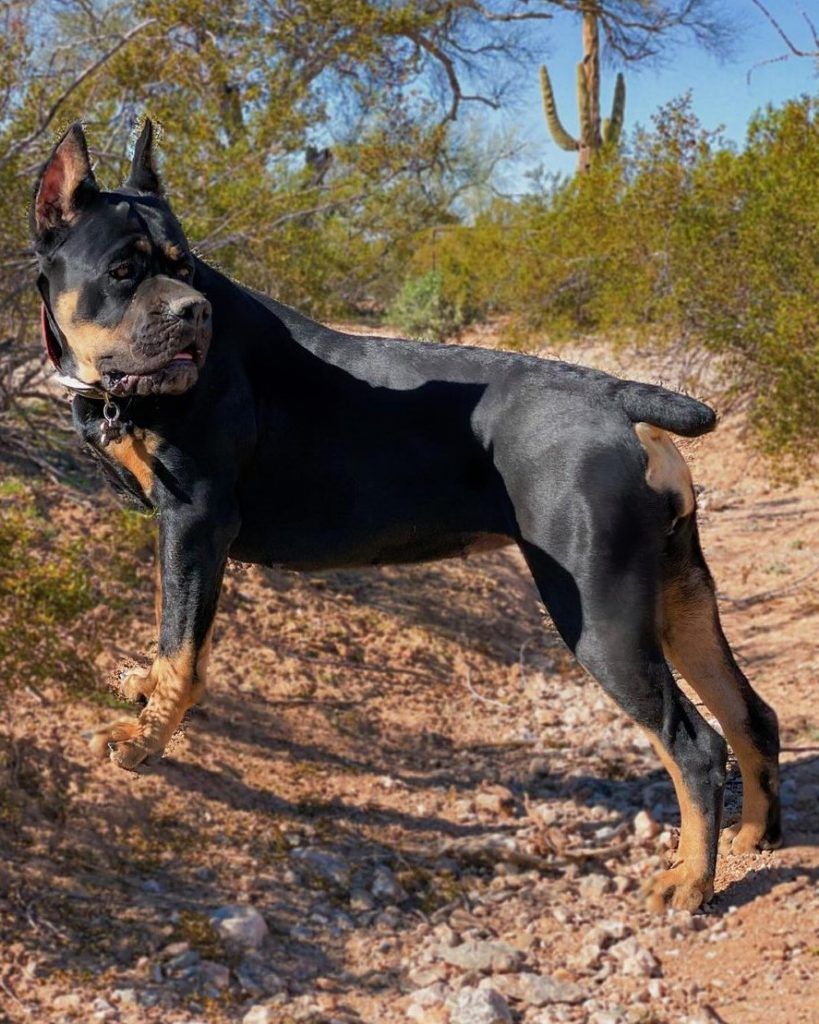
Photo Credit: @ofcorsowefloof(ig)
Some patterns and markings are considered faults or disqualifications by the AKC breed standard. These include:
- White markings that exceed one-third of the body
- Tan points or tricolor coat
- Piebald, spotted, or harlequin coat
- Solid white, solid chocolate or liver, or solid isabella coat
These patterns and markings are not typical of the Cane Corso breed and may indicate crossbreeding or genetic defects.





